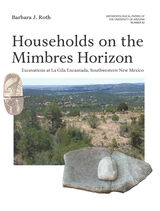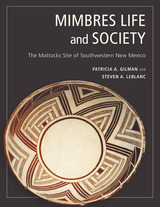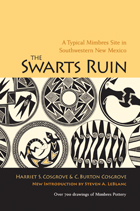
Little is known about the variability present at pithouse sites away from the major Mimbres and Gila River Valleys. Nonriverine occupations have been understudied until now. This book describes subsistence and settlement practices and compares the results with recent research conducted at the larger villages in the Mimbres River Valley. Despite basic similarities in material culture, households at La Gila Encantada appear to have followed different trajectories than those along the rivers. Examining these differences, archaeologist Barbara J. Roth provides insights into some of the reasons why they existed and shows that the variability present in pithouse occupations over the years was tied to multiple factors, including environmental differences, economic practices, and the social composition of groups occupying the sites. With chapters assessing ceramic data, chipped and groundstone analysis, shell and mineral jewelry, and regional context, this look at the past offers relevant insights into current issues in Southwest archaeology, including identity, interaction, and household organization.

Mimbres pueblos, as early examples of people using surface room blocks, are ideal for investigating questions about how and why people moved from earlier subterranean pit structures to aboveground room blocks. The authors consider the number of households living at the site before and after the transition, as well as the lack of evidence for subsistence intensification and population growth as causes of this transition. These analyses suggest that each room block on the site housed a single family as opposed to multiple families, the more common interpretation. There were not necessarily more households on the site during the Classic period than earlier.
Patricia A. Gilman and Steven A. LeBlanc spent five seasons excavating at the Mattocks site and many more analyzing and writing about Mattocks site data. They note that subtle social differences among people were at play, and they emphasize that the Mattocks site may be unique among Mimbres pueblos in many aspects. Mimbres Life and Society reveals broad-ranging implications for southwestern archaeologists and anyone interested in understanding the ancient Southwest and early village societies.

In 1919, C. Burton and Hattie S. Cosgrove bought land in Grant Country, New Mexico, and began excavating ruins containing Classic Mimbres (ca. A.D. 1000-1150) ceramics. The self-trained archaeologists took great care in uncovering and recording their findings. They so impressed A.V. Kidder of the Peabody Museum when he visited the site he invited them to manage a museum expedition to the Swarts Ruin.
Long out of print, this classic volume is the Cosgrove's report of their Mimbres Valley Expedition seasons of 1924 to 1927. The excavation recorded nearly 10,000 artifacts, including an extraordinary assemblage of Mimbres ceramics. Hattie Cosgrove's meticulous line drawings of over 700 individual Swarts Ruin pots have long been an invaluable design catalog for contemporary Native American artists and serve as a rich resource for designers seeking Southwest inspiration in their work.
This clothbound facsimile edition of the original 1932 publication will be an essential to the libraries of all scholars, artists, and admirers of Native American art and archaeology.

This classic volume on the evocative and enigmatic pottery of the Mimbres people has become an irreplaceable design catalogue for contemporary Native American artists. Burt and Harriet (Hattie) Cosgrove were self-trained archaeologists who began excavating Mimbres materials in 1919. When their meticulous research came to the attention of Alfred V. Kidder of the Peabody Museum, he invited them to direct the Mimbres Valley Expedition at the Swarts Ranch in southern New Mexico on behalf of the Peabody.
Working in the summers of 1924 to 1927, the Cosgroves recovered nearly 10,000 artifacts at the Swarts site, including an extraordinary assemblage of Mimbres ceramics. Like their original 1932 report, this paperbound facsimile edition includes over 700 of Hattie Cosgrove’s beautiful line drawings of individual Mimbres pots. It also presents a new introduction by archaeologist Steven A. LeBlanc, who reviews the eighty years of research on the Mimbres that have followed the Cosgroves’ groundbreaking study. The Peabody’s reissue of The Swarts Ruin once again makes available a rich resource for scholars, artists, and admirers of Native American art, and it places in historical context the Cosgroves’ many contributions to North American archaeology.
READERS
Browse our collection.
PUBLISHERS
See BiblioVault's publisher services.
STUDENT SERVICES
Files for college accessibility offices.
UChicago Accessibility Resources
home | accessibility | search | about | contact us
BiblioVault ® 2001 - 2024
The University of Chicago Press









